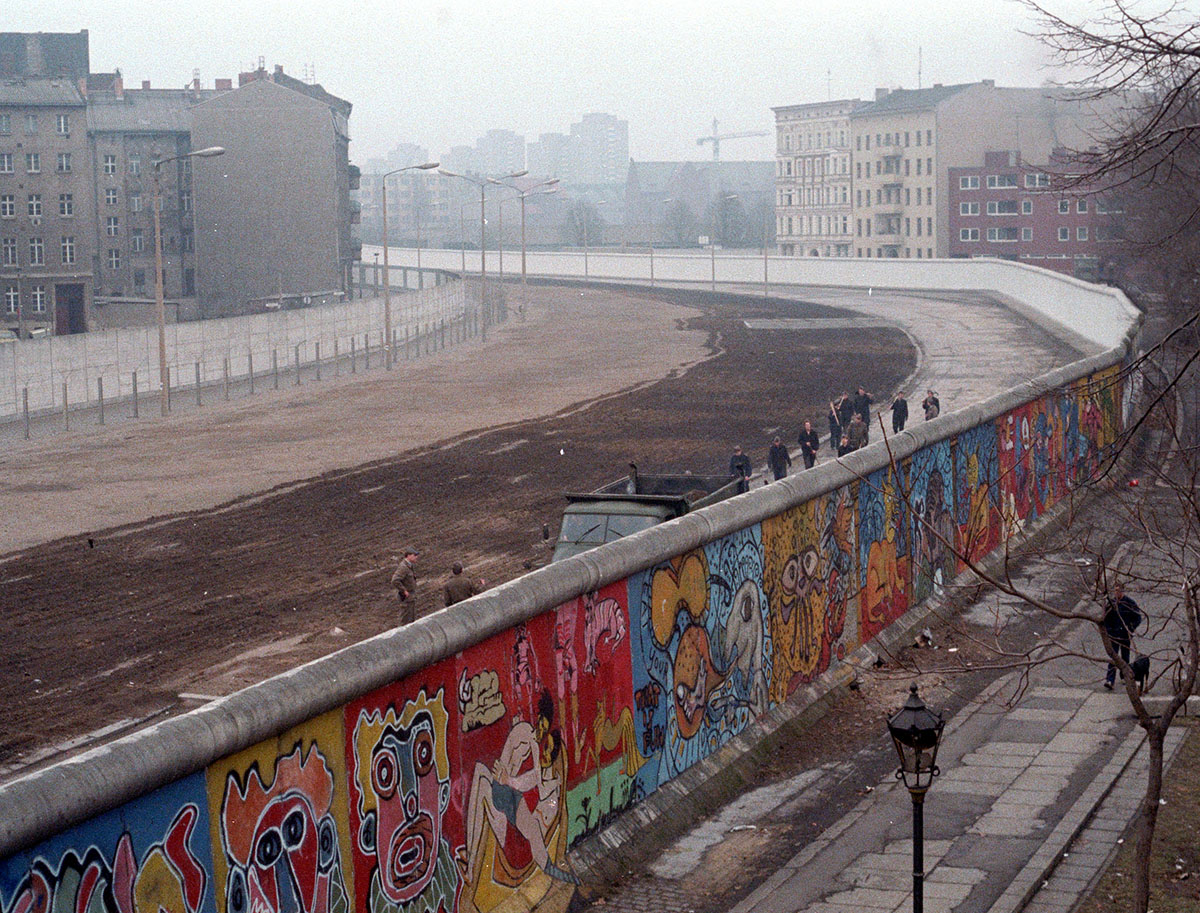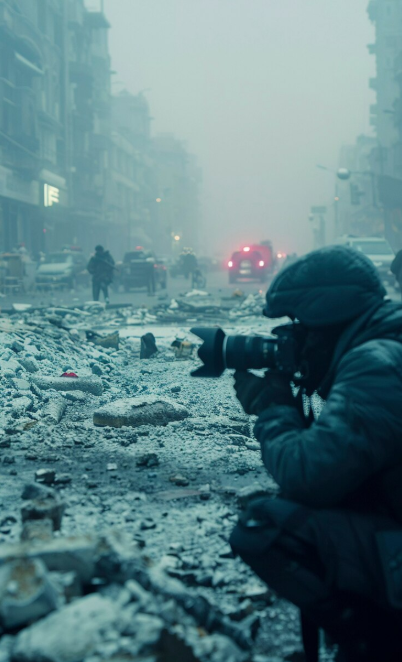Effects of the Cold War
A Deep Dive into Post-War Global Dynamics
The Cold War reshaped the geopolitical landscape of the 20th century, introducing a new global order defined by ideological divides, military alliances, and proxy wars. Its impacts were far-reaching, affecting nations economically, politically, and socially. Let’s delve into the key Effects of the Cold War, examining how it influenced international alliances, technological advancements, and global conflicts.
The Formation of Cold War Alliances
One of the most significant Effects of the Cold War was the creation of two major military alliances: NATO and the Warsaw Pact. These alliances symbolized the ideological divide between capitalism and communism and became the backbone of the Cold War era.
NATO (North Atlantic Treaty Organization): Formed in 1949, NATO united Western nations under the umbrella of capitalism and democracy. Key members included the United States, Canada, and several European countries, with the primary goal of countering Soviet expansion in Europe.
Warsaw Pact: Established in 1955, the Warsaw Pact was a direct response to NATO. It comprised Eastern European nations under Soviet influence, serving as a military and political counterweight to NATO. It also allowed the USSR to exercise control over its satellite states.
These alliances intensified global tensions and cemented the ideological split that defined the Cold War.
Rising Tensions and Non-Violent Cold War Conflicts
While the Cold War did not escalate into direct military confrontation between the United States and the USSR, it manifested through non-violent conflicts, including the Space Race and the construction of the Berlin Wall.
The Space Race
The Space Race was one of the most prominent non-violent conflicts of the Cold War, symbolizing the technological and ideological rivalry between the superpowers.
The race began in 1957 when the Soviet Union launched Sputnik, the world’s first artificial satellite.
The United States responded with the successful Apollo 11 mission in 1969, landing the first humans on the moon.
Beyond its scientific achievements, the Space Race demonstrated each nation’s military capabilities, as advancements in space technology had potential military applications, such as intercontinental ballistic missiles (ICBMs).
The Berlin Wall
The Berlin Wall became a physical symbol of the Cold War’s ideological divide. Constructed in 1961 by East Germany, the wall separated East and West Berlin, preventing East Germans from fleeing to the capitalist West.
It highlighted the repressive nature of the Soviet regime and became a flashpoint for Cold War tensions.
The wall’s fall in 1989 marked the beginning of the end of the Cold War and the reunification of Germany.

Proxy Wars: Battlegrounds of Ideology
Instead of engaging directly, the United States and the USSR fought through proxy wars in third-party nations, supporting opposing sides to spread their ideologies.
The Korean War (1950-1953)
North Korea, backed by the Soviet Union and China, invaded South Korea, supported by the United Nations and led by the United States.
The war resulted in significant casualties and established the Demilitarized Zone (DMZ), which still separates North and South Korea today.
The Vietnam War (1955-1975)
North Vietnam, supported by the USSR and China, sought to unify the country under communism, while the United States supported South Vietnam.
The war deeply divided American society and ended with the unification of Vietnam under communist rule.
The Angolan Civil War (1975-2002)
The war saw the socialist MPLA, backed by the USSR and Cuba, fighting against the anti-communist UNITA, supported by the United States and South Africa.
It was one of Africa’s longest and deadliest conflicts, exacerbated by Cold War politics.
The Sandinista-Contras Conflict (1979-1990)
In Nicaragua, the communist-leaning Sandinista government, supported by the USSR, faced opposition from the US-backed Contras.
The conflict resulted in significant displacement and casualties, ending with democratic elections in 1990.
Economic and Social Impacts of the Cold War
The Effects of the Cold War extended beyond military and political arenas, deeply influencing the economic and social structures of nations.
Arms Race and Economic Strains
The Cold War triggered an arms race, with both superpowers investing heavily in nuclear weapons and military technology.
This arms race strained the Soviet economy, contributing to its eventual collapse in 1991.
Technological Advancements
Competition during the Cold War spurred significant technological progress, including advancements in computing, telecommunications, and medicine.
These innovations, though driven by military objectives, had lasting civilian applications.
Social Changes
In the United States, the Cold War fueled anti-communist sentiment, leading to policies like McCarthyism, which targeted alleged communist sympathizers.
In the USSR and its satellite states, strict censorship and propaganda were used to suppress dissent and maintain control.
Conclusion: The Legacy of the Cold War
The Effects of the Cold War continue to shape global politics and society. From the formation of enduring alliances like NATO to the lingering impacts of proxy wars in regions like the Korean Peninsula and Vietnam, the Cold War left an indelible mark on history. Its conclusion in 1991 marked the end of an era but also set the stage for new global challenges and power dynamics.
As we reflect on this period, it’s clear that the Cold War was not just a geopolitical struggle but a transformative era that reshaped the world in profound ways.

50 Frequently Asked Questions about Effects of the Cold War
1. What were the political effects of the Cold War?
The Cold War polarized the world into two ideological camps, leading to the creation of military alliances like NATO and the Warsaw Pact, and shaping global politics around U.S.-Soviet rivalry.
2. How did the Cold War impact international relations?
It led to heightened tensions, a focus on deterrence, and the proliferation of proxy wars in Asia, Africa, and Latin America, significantly influencing global diplomacy.
3. What were the economic effects of the Cold War?
Both superpowers invested heavily in defense and technology, leading to economic strain on the USSR and stimulating industrial and technological growth in the U.S.
4. How did the Cold War affect the global balance of power?
The Cold War established a bipolar world order dominated by the U.S. and USSR, replacing the European colonial empires as the primary global influencers.
5. What were the cultural effects of the Cold War?
The Cold War influenced films, literature, and art, often reflecting themes of espionage, nuclear war, and ideological struggles.
6. How did the Cold War shape technological advancements?
The arms race and space race spurred innovation in areas like rocketry, computing, and communications, with many civilian applications emerging later.
7. What was the impact of the Cold War on education?
Both blocs emphasized education, particularly in science and technology, to produce skilled workers and gain an edge in the global competition.
8. How did the Cold War influence the development of nuclear weapons?
The Cold War drove the proliferation of nuclear weapons, with both superpowers amassing vast arsenals and developing the concept of mutually assured destruction (MAD).
9. What was the effect of the Cold War on the military?
It led to the militarization of societies, the establishment of large standing armies, and the development of advanced military technologies.
10. How did the Cold War affect European nations?
Europe was divided into Western and Eastern blocs, with NATO and the Warsaw Pact representing their respective alignments. This division shaped economic and political systems.
11. What were the environmental effects of the Cold War?
Nuclear testing, industrialization, and militarization during the Cold War contributed to environmental degradation and the buildup of hazardous materials.
12. How did the Cold War impact the United Nations?
The Cold War often paralyzed the UN due to vetoes by the U.S. and USSR in the Security Council, limiting its ability to resolve conflicts effectively.
13. What were the effects of the Cold War on Africa?
African nations became battlegrounds for proxy wars, with superpowers supporting opposing factions, often exacerbating internal conflicts.
14. How did the Cold War affect Latin America?
The U.S. intervened in Latin America to prevent the spread of communism, leading to coups, support for authoritarian regimes, and civil wars.
15. What were the effects of the Cold War on Asia?
Asia experienced significant conflicts like the Korean and Vietnam Wars, as well as Cold War rivalries shaping the region’s political and economic landscape.
16. How did the Cold War shape the Middle East?
The Middle East became a strategic battleground, with superpowers vying for influence over oil resources and supporting rival factions in regional conflicts.
17. What was the impact of the Cold War on global trade?
Trade was divided along ideological lines, with the Eastern bloc focusing on self-sufficiency and the Western bloc promoting free-market policies.
18. How did the Cold War affect space exploration?
The space race led to significant achievements like the Soviet launch of Sputnik and the U.S. moon landing, showcasing technological and ideological competition.
19. What was the impact of the Cold War on proxy wars?
Proxy wars in regions like Korea, Vietnam, and Angola resulted in widespread devastation, with local populations often bearing the brunt of the conflict.
20. How did the Cold War affect global alliances?
Alliances like NATO and the Warsaw Pact solidified ideological divisions and created long-lasting geopolitical alignments.
21. What was the role of propaganda during the Cold War?
Propaganda shaped public opinion, promoted ideological superiority, and demonized the opposing bloc, influencing domestic and international perceptions.
22. How did the Cold War influence international law?
The Cold War highlighted the need for treaties to regulate arms control, leading to agreements like the Nuclear Non-Proliferation Treaty (NPT).
23. What were the effects of the Cold War on human rights?
Both blocs used human rights issues to criticize each other, while domestic repression often increased in the name of national security.
24. How did the Cold War impact women’s roles?
The Cold War created opportunities for women in the workforce and education, particularly in science and defense industries, though traditional roles often persisted.
25. What was the economic impact of the Cold War on the Soviet Union?
The Soviet Union’s focus on military spending strained its economy, contributing to stagnation and eventual collapse.
26. How did the Cold War affect the U.S. economy?
The U.S. economy benefited from Cold War defense spending, technological innovation, and the expansion of its industrial base.
27. What were the social effects of the Cold War?
The Cold War created fear of nuclear war, promoted patriotism, and influenced cultural and social norms through media and education.
28. How did the Cold War influence globalization?
While ideological divisions hindered global integration, the Cold War spurred technological advancements and international institutions that later facilitated globalization.
29. What was the impact of the Cold War on art and literature?
Cold War themes of espionage, nuclear fear, and ideological struggles were prominent in literature, films, and visual arts, shaping cultural expressions.
30. How did the Cold War affect international organizations?
Organizations like the UN and the IMF were influenced by Cold War dynamics, often reflecting the competing interests of the superpowers.
31. What was the effect of the Cold War on non-aligned nations?
Non-aligned nations sought to avoid entanglement in the Cold War, promoting independence and focusing on economic and social development.
32. How did the Cold War shape technological competition?
The competition led to advancements in computing, aerospace, and military technologies, many of which had civilian applications.
33. What was the impact of the Cold War on the environment?
Nuclear testing, deforestation for military purposes, and industrial expansion caused significant environmental damage during the Cold War.
34. How did the Cold War influence education systems?
Both superpowers invested in education, emphasizing science, technology, and ideological training to maintain their global competitiveness.
35. What were the effects of the Cold War on migration?
Political repression and economic hardship prompted migrations from Eastern to Western Europe, while ideological divides shaped refugee policies.
36. How did the Cold War affect developing nations?
Developing nations often became battlegrounds for Cold War competition, with foreign aid and military interventions influencing their development paths.
37. What was the effect of the Cold War on civil rights movements?
The Cold War spotlighted racial and social inequalities, with both blocs using them to criticize each other, indirectly supporting civil rights movements.
38. How did the Cold War shape global health initiatives?
Superpowers competed to influence global health, funding programs to combat diseases like smallpox and polio in developing nations.
39. What was the impact of the Cold War on espionage?
Espionage became a hallmark of the Cold War, with agencies like the CIA and KGB conducting covert operations and intelligence gathering.
40. How did the Cold War influence peace movements?
The threat of nuclear war inspired peace movements advocating for disarmament and the resolution of conflicts through diplomacy.
41. What was the role of media in the Cold War?
Media served as a tool for propaganda, showcasing each bloc’s achievements while demonizing the opposition.
42. How did the Cold War impact civil liberties?
Both superpowers curtailed civil liberties, citing national security, leading to surveillance, censorship, and political persecution.
43. What was the effect of the Cold War on science?
The Cold War drove scientific research in areas like space exploration, medicine, and technology, often blurring the lines between military and civilian applications.
44. How did the Cold War shape modern geopolitics?
The Cold War established long-lasting alliances, rivalries, and political systems that continue to influence global relations.
45. What was the impact of the Cold War on human migration?
The Cold War influenced migration patterns, with political refugees fleeing communist regimes and economic migrants seeking better opportunities in the West.
46. How did the Cold War affect the structure of international trade?
Trade was divided between Western capitalist economies and Eastern socialist systems, shaping global trade policies and practices.
47. What were the cultural exchanges during the Cold War?
Cultural exchanges were used as soft power tools, showcasing achievements in art, sports, and education to influence global perceptions.
48. How did the Cold War affect global security policies?
The Cold War led to the establishment of policies focused on deterrence, intelligence sharing, and collective defense, many of which persist today.
49. What was the impact of the Cold War on public perception of science?
Science became associated with national progress and security, leading to increased public interest and funding for scientific endeavors.
50. What lessons can be learned from the Cold War?
Lessons include the importance of diplomacy, the risks of ideological polarization, and the need for international cooperation to address global challenges.
This comprehensive guide explores the multifaceted effects of the Cold War, emphasizing its lasting influence on global politics, society, and culture.







